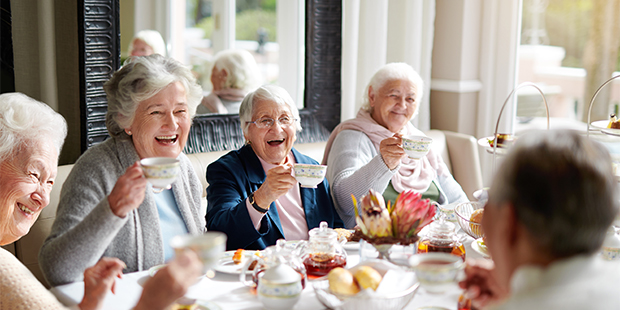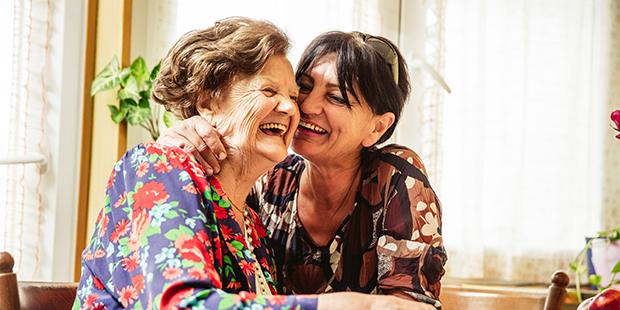The dangers of staying at home
Most people want to end their days in their own home - but experts say that can be unwise.

The aged care industry says times have changed from when rest homes were perceived as “places where people go to die.” Now, it is often dangerous to stay at home.
Simon Wallace, chief executive of the New Zealand Aged Care Association (NZACA), says their recent study, Caring for our older Kiwis: the right place at the right time, demonstrated the benefits of placing elderly people into residential aged care by examining 300,000 clinical assessments of people before and after going into care.
It found 82 per cent of older people no longer felt lonely when they moved into care, 74.5 per cent had improved health stability and 62.6 per cent had improved levels of pain. “Their quality of life and their health improved,” he says.
The study assessed people from before moving into care to six months afterwards and compared analysis scores for factors like daily living, health stability, depression, pain, pressure sores, cognitive performance, aggressive behavior (if any) and communication.
“The results showed the huge benefits of entering aged care,” says Wallace. “Over 37 per cent had improved independence, almost 75 per cent had improved overall health stability, 27 per cent had improved cognitive performance and, of those with signs of depression, 62 per cent showed an improvement.”
Yet Brien Cree, managing director of leading aged care group Radius, maintains DHBs around the country are delaying access to rest homes for older people who need it, making many stay at home with potentially serious consequences for their health.
That’s because there is a shortage of beds for elderly people who need care – even though our ageing population is set to rapidly increase. By 2043, people aged 65 and over are forecast to number up to 1.4m in a population of about 6m, with those aged 85 and over up to 280,000.
Yet there are only 39,000 aged care beds in New Zealand at present, slated to rise only to 52,000 by 2026. Both Radius and the NZACA say the returns experienced by aged care operators are so slim, they cannot afford to build more homes – and successive governments have not changed the funding model.
Wallace says the DHBs need the aged care industry to expand: “There are only 11,000 hospital beds and we have 39,000 – but they are full. If we weren’t there tomorrow, hospitals would be overflowing; they just wouldn’t cope.”
Cree says the future will see many more people who need aged care than can fit into the beds available: “What the DHBs are doing as a result is weighing up ways of saving money – and one way is to cut the number of needs assessors so that we now have a situation where people can be waiting for 1-2 years to be assessed and get into aged care.
“So these people have to stay at home, where it is often unsafe for them. They could have a fall, they could be undiscovered for days and even if that doesn’t happen, if they don’t have adequate home care, many are just sitting in a chair, subject to depression and bad health outcomes.”
“It’s also false economy, really, as an elderly person could fall and break a hip and then they are in hospital, costing $3000-$5000 a day to keep them there.”
“We’ve got 22 facilities across New Zealand and we constantly see examples where those people who need care really enjoy life once they move in. All of a sudden, they are in a nice environment, they have some friends and their health outcomes improve immediately.
“The old perception of rest homes has long gone. The vast majority of the sector – I’d say 98-99 per cent – are thoroughly professional and, at Radius, the whole culture is aimed at helping people who stay with us to have an improvement in their quality of life; we want them and their families to know they are better off and to feel, ‘Thank God they are there’.”
The NZACA report also showed that, out of the 21 DHBs, the best admission rate for people in most need of care was only 54.1 per cent (Waitemata DHB), with the worst being Bay of Plenty (29.6 per cent) and West Coast (28 per cent) the worst. Only 10 DHBs had an admission rate of better than 40 per cent.
In terms of months taken to get into a residential care bed, it took those people most in need of care an average of 2.1 months (if they lived in the Waitemata DHB area) or 9.7 months if they lived in Hawkes Bay. Only 8 DHBs had waiting times of less than four months.
Cree says most people are the same – in their old age, they want to stay at home and end their days there: “We are not saying everyone has to go into care. Most people are fine staying at home; they might need a bit of home care and they get that and they pass away at home.”
The problem comes, he says, when elderly people need a care facility – and can’t get in one.
For more information visit Radius Care.








